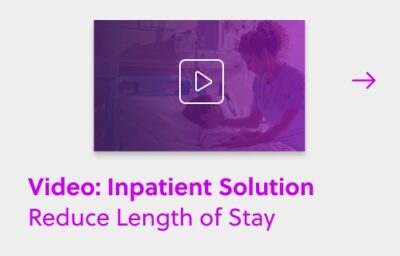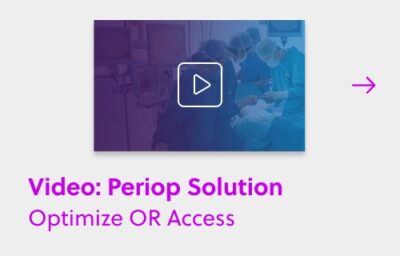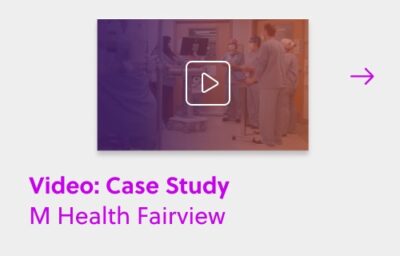
I have thought about patient experience throughout my career, first as an employee of a large healthcare provider, then at a healthcare research & consulting firm and now at analyticsMD. I thought I had a good perspective of what patients go through and where our system falls short.
That changed last month when I got admitted to a hospital.
24 hours in the hospital as a patient have given me a far deeper understanding of what patients go through and the experience we as an industry need to strive for on a daily basis. As I battled the anxiety of being admitted, I couldn’t turn off my inner healthcare nerd and asked myself, what can be better?
For background, patient experience is top of mind for most providers around the country and many have made tremendous progress over the past couple of years. With the increase in transparency from CMS and companies like Propublica, Yelp and our own effort here, combined with the increasing consumerism, competition from new entrants such as Walgreens & Walmart, most boards and C-Suite teams around the country are looking to enhance their patient experience.
Here are my lessons that have given me an even deeper appreciation of our mission at analyticsMD and how I think we can all enhance patient experience further…
The Little Things Do Matter
Performance Improvement IS Patient Experience
Our Feedback Loop Is 10 Years Behind Other Industries
1. The Little Things Do Matter
When I think about great experiences with airlines, hotels or retail, it is seldom one factor that drives the satisfaction but rather the many “little things”. Healthcare isn’t any different from other sectors.
Of course there are some factors that are obvious in terms of their importance, such as pain management, care team communication or empathy, but then there are those that don’t fall under any specific survey. These are the 1000 seemingly trivial details that emotionally drive the patient to have a single word conclusion such as “great /good/bad/terrible.”
Being in healthcare, I knew a nurse couldn’t be by my side at all times and that call light button (every bed has one) may not be answered right away. But the few times the care team anticipated my needs and knew when I really needed help is when I was most impressed during my stay at the hospital, not by the long list of available amenities or online tools.
In term of execution, creating such a seamless patient experience where your every need as a patient is anticipated is quite difficult. Especially in a world where providers on the front line are constricted by task based tunnel vision caused by the constant need of EMR documentation and an inability to step back in an increasingly protocol and checklist driven environment. It’s a lot easier to focus on building a new wing or a new patient experience office, than enabling cultural transformation on the floor.
Providers shouldn’t have to decide between outcomes and experience. It doesn’t have to be this difficult.
In a world where from population health teams to CMS to private payors demand the front line to document every single action in the EMR, the last requirement for a care team should be to remember all of the intricate details about a patient’s non-clinical preferences. While thinking about this challenge at the hospital, I couldn’t help but get excited about our mission at analyticsMD.
Providers are now creating data at such a rate that no one individual can constantly monitor and understand what it means at a group or system level. Did the nurse from the evening shift know the patient had pressed the call button 3 times to ask for pain medication this afternoon? Does the provider know that the same patient was already unhappy because s/he was waiting in the ED for 3 hours before being admitted?
How can we build software that assist nurses and physicians to know that I as the patient may be dissatisfied and may need to talk to someone even before I press that call light button? At analyticsMD, we are proud to work on this exact problem by building a system that is similar to air traffic control in aviation that effectively monitors these “1000 trivial details” in the data and translate them to insights and actions.
Already deployed at leading hospitals like El Camino Hospital in the bay area, our platform acts as a real time operational decision support, actively prescribing solutions to the frontline based on inputs from “mini-patient” journeys via the EMR and countless other “little things” like past visits to the hospital, call light data, bed movement data, and any other internal sensors (which Internet of Things will accelerate) and systems.
It is unfortunate that in healthcare, providers are used to the fact that software slows them down, but with the right tools, my hope is that the burden of remembering these “little details” will shift from the care team to operational decision support platforms like analyticsMD.
2. Performance Improvement is Patient Experience
As a patient in the ER, I was constantly moving from a lab, to a room, to a hallway, to another room. And as I was moving through the hospital, I wondered if all the little inefficiencies could be corrected in the moment with something passively monitoring my situation and helping busy frontline workers?
I couldn’t help but think that a growing part of my frustration during my stay as a patient was due to my visibility in the hospital’s inefficiency affecting my care.
At analyticsMD for example, we make recommendations to our provider partners in real time to the relevant care team member to ensure maximum efficiency with available resources (see our previous post on using Google Maps/Waze in Healthcare). We believe a charge nurse should automatically be notified if it is predicted that s/he will need to open up that extra bed or add that extra nurse based on internal systems like the EMR or external like public flu data.
If you ever speak with a nurse or a physician, it is clear that there is a growing frustration among providers due to the unbalanced ratio between the effort required to put in the data and the difference it makes for patient care. In other words, far too much goes into the (electronic) system and not enough comes out to impact the front line. With advanced platforms like ours taking advantage of tools such as machine learning, every hospital could finally take advantage of its own data and “close the loop” from data entry to prescribing the action in real time to maximize its resources.
Based on my experience at a hospital, I wish “performance improvement” or “patient flow” or “patient experience” weren’t separate ideas or teams, but rather one concept with many different variables.
3. Feedback Loop Is 10 Years Behind Other Industries
McKinsey & Company had a great white paper recently on patient experience called “Measuring the patient experience: Lessons from other industries.” They discuss some of the key insights in enhancing patient experience based on sectors outside of healthcare, including the need to “Uncover operational insights that enable the frontline staff to make (real time) continuous improvements in the customer experience.”
As a (now former) patient, I believe the question is not if, it is how we uncover these operational insights in real time.
A common frustration during my experience and for many patients I interacted with was the constant ignorance of their input. And to enable the necessary changes, we need a transformation in both culture and tools.
Healthcare workers, especially physicians, traditionally have been taught to be paternalistic in their healthcare delivery. Incorporating the patient’s input is, believe it or not, more of a recent phenomenon. Combine the fact that medical knowledge doubles roughly every 18 months with the ability for me or anyone else to access that knowledge via my iPhone or iPad on a push of a button, it is easy to see why patients have started to question their clinicians a lot more in the past few years than before.
Until recently, “customer” was a dirty word to use in healthcare. Although Amazon has recently been in the press for its employee relations, I do think we need to be inspired in healthcare from its focus on the customer. More leaders in our industry need to think about rolling in “The Empty Chair” like they often do in internal meetings at Amazon, to ask their employees to imagine the customer sitting in the meeting and voicing their opinion.
As healthcare leaders around the country focus on the shift to value based care and population health, we should also focus on incorporating this customer centric mindset in every internal meeting/initiative. At the same time we should also transform the way we train our physicians, nurses, and other allied healthcare staff, so that they are taught to partner with their patients and their families in this new age where the iPhone can be as meaningful as the stethoscope.
A great patient experience is not possible without a great culture.
Beyond culture, we also need a paradigm shift in our tools used to understand and change behavior based on patient feedback. The U.S. government should get credit for incentivizing provider revenue risk/bonus based on satisfaction scores from the “Hospital Consumer Assessment of Healthcare Providers and Systems” Survey (HCAHPS). However, a survey can never capture a patient’s experience completely and the difficult several months delay in getting this data back restricts the hospital’s ability to react to their areas of weakness/opportunities.
To counter this delay in patient satisfaction scores, leadership teams including many Chief Nursing Officers in the country are pushing for hourly rounding by the care team to assess the patient and thus be able to intervene more quickly. As a patient, however, I now understand that (a) a lot can happen during a one hour window, (b) the care team couldn’t possibly round on every patient every hour given the workload and (c) it certainly can be more automated and less repetitive with smarter tools in place.
Hourly rounding isn’t enough to address the underlying issue, real time intervention is the future.
It is clear that providers who will take advantage of the exponential rate of data collection and enhance patient experience with prescriptive actions in real time will have a disproportionate advantage over their competitors.
My final advice for leaders in healthcare who are responsible for patient experience: Get Admitted and actually experience the patient journey!
What you will learn there will be 10x more valuable than any consultant or tool. The brilliant design team at IDEO, specifically Kristian Simsarian, captured the patient journey in video at a hospital and realized for example that most of the time the patient is simply staring at the blank hospital ceiling.
What I learned in 24 hours as a patient was more valuable than any paper I have read or conference I have attended. Every single provider has their respective strengths/weaknesses and you are bound to learn valuable information by simply switching the role from a provider to a patient.
Fore more information, please go to analyticsMD.com/solutions or blog.analyticsMD.com


